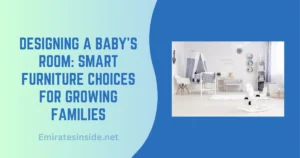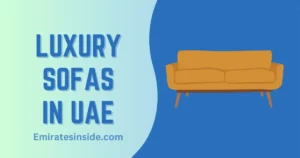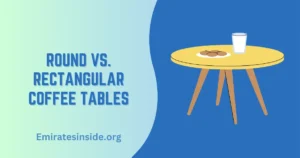How to Incorporate Arabic Design Elements into Your UAE Home
Arabic design brings timeless elegance and cultural richness to homes in the UAE. It features intricate details, harmonious patterns, and bold colors. These elements blend tradition and artistry beautifully.

Whether you want to recreate classic Arabic interiors or add a modern Middle Eastern touch, Arabic design is perfect. It can make your home’s ambiance truly special.
Understanding the Essence of Arabic Design
Geometry and order, as well as focus on every detail, are central to the Arabic style. There are geometric figures that prevail as they stand for oneness and hierarchy. An essential part also is skillfully executed calligraphy, which is the idea of culture and poetry, usually spreading concepts contained in the Quran.
Elements drawn from nature through materials like wood, stone and metals bring in the authenticity. In contrast, the presence of rich stones like emerald green, deep red and cobalt blue enhances the impact against neutral colours like ivory and beige. These aspects together strike a nice balance between traditional and modern designs ensuring their relevance in all homes.
Integrating Geometric Patterns into Your Space

When it comes to Arabic interior design, one cannot overlook the geometric approaches of decor; there are numerous ways in which they can be seamlessly included in the decor of the house. Geometric patterns on the walls can also function as focal points that change any area of the home into an appealing space.
Decorative tiles looking great on the floors, ceilings, or kitchen backsplashes can be an ingenious way of adding character to previously plain surfaces. Statement furniture, such as those with nonlinear inlay designs using mother-of-pearl or brass, can add to the decor extravagantly and seriously.
The Warm Glow of Arabic Lighting

The overhead light too is instrumental in the mood enhancing Arabic ranges owing to the nature of the interiors. The metal and glass decorative lantern, when tinned, throws a wide variety of shadows that make the room lively and entertaining. These lanterns are perfect as hanging fittings in the dining house or as good table lamps in the sitting room.
Lighting that has been designed with a mashrabiya motif is one such modern interpretation of Arabic theming that incorporates lattice work into its design. It’s also possible to reduce the intensity and direction of the light to expose the designs of the pattern on walls and other textures, making the environment calming and soothing.
Adding the Artistic Touch of Arabic Calligraphy
Calligraphy is an ancient art form which, when employed correctly, can enhance the depth and meaning of the objects in your house. Wall art depicting calligraphy can act as a beautiful centrepiece for the living room or dining area. Enhancing everyday products, pillows, rugs, and curtains with calligraphic designs brings understated refinement to the area. To make it personal, you can get customized pieces professing your favourite verses in Arabic using paintings or engraved Arabic script.
Balancing Vibrant Colors and Neutral Tones

Dubai interior design contains bright jewel tones, which require an understated minimalist treatment for effective application. Jewel colours such as sapphire blue, ruby red, and gold can make appearances on the upholstery, wall arts or other decorative items while ensuring a light base colour like pale beige or cream acts as a balance. Combining these colours with textured fabrics such as velvet, silk, or wool adds warmth and dimension to the space while making it feel inviting.
Incorporating Mashrabiya for Timeless Elegance
In Arabic architecture, the mashrabiya is a lacy wooden screen or perforated lattice that serves as both a decorative and practical approach. It not only provides an acoustic barrier to sound transmission but allows for ventilation and illumination. The patterns on these panels can be modified further by using them in more places, such as cabinet doors, headboards, and wall-mounted paintings, thus enhancing the aesthetic value of the household.
Enriching Your Home with Arabic Textiles
Adding textiles crafted in Arabic cultures will add a decorative richness to your home. Using Middle Eastern carpets found with decorative patterns to level up your interior décor while adding decorative pillows and pillows for the couch and beds will create an aura of class. Silk and velvet embroidered curtains will complement the rich arab texts to create a wonderful wall-to-wall configuration. It is important to note that these Arabic textiles and others have a purpose beyond being decorative: they serve as a source of comfort.
Showcasing Arabic Architectural Features

A defining characteristic of Arabic architecture is the decorated arches, domes, and niches that can even complement modern houses. The presence of arched doorways and windows brings in some level of tradition and sophistication, while artificial niches or alcoves present ideal spaces for ornamental items such as lanterns, pottery or even pieces of art. Decorative features such as carvings on cornices or mouldings can also be used to beautify the ceilings and walls of the house to appeal to architectural aesthetics.
Using Natural Materials to Ground the Design
Bringing in natural materials is a major part of Arabic design, and this adds a sense of originality and pleasure to the spaces. Dark-coloured polished wood makes for excellent furniture, while marble or stones can be used for floors, worktops or ornamental pillars. Metal accents in furniture, light fittings or other decorative pieces in brass, copper or even gold add a sense of glamour. Another option to integrate Middle Eastern beauty into a space is with ceramics or pottery with traditional designs.
Enhancing Outdoor Spaces with Arabic Style

In most cases, outdoor areas within an Arabic design can be viewed as an extension of the interior space of the home, which is meant for leisure and social activities. For example, the Majlis area, which has relatively low cushions at the sides of the room and a central table, serves as a space to receive and cater to visitors for other rooms like the garden or the patio, pergolas or canopies with Arabic designs serve as good boundaries. The environment is enhanced with more Arabic design elements; for instance, placing mosaic tiles of fountains or reflecting pools in the interior decor induces serenity while providing a glimpse of nature all the while.
Blending Tradition with Modernity
If one wishes to use Arabic design in a modern way, one could modernize the accents and other such artifacts in order to have a magnificent and one-of-a-kind home. Exposed Arabic details under a sleek look are now achievable with easy geometric patterns, neutral colours and sleek designed furniture. For example, a Mashrabiya design can be laser cut onto modern material like metal and light acrylic; current-day elements and styles are matched perfectly with this aspect, further bringing a new look to this ancient classic.
Conclusion
Indeed, it is true that Arabic design contributes positively when added to the traditional styles of homes in the UAE. It is also an ideal way of preserving the cultural values of the region and creating an atmosphere that is warm, friendly and sophisticated at the same time. Geometric patterns or calligraphic designs on walls, fabrics, and Mashrabiyas, among others, can assist in modifying your home to show culture and heritage. It is conceivable to sacrifice traditional elegance for a more contemporary outlook but still accomplish the desired personal decor touch. Start today and allow your homestead to exhibit the beauty of Arabic design.






